After several months of preparation another expedition was successfully completed at the spring Sintzi in Kandhila, in the County of Arcadia, Peloponnisos, on Saturday July 4 2009.
With the completion of the last expedition the explored depth is now 153 meters, which ranks the spring as the deepest known underwater natural cavity in Greece.
In detail, the last dive reached a maximum depth of 153,5 meters and lasted 5 hours and 32 minutes.
One of the major tasks of the preparation phase over several months, was the construction and installation of a modular, inflatable habitat at 500 meters from the entrance of the spring.
The utilization of a habitat was deemed necessary in order to increase the safety and the confront of the divers that have to undertake long decompression times at 10 degrees C water.
The decision to use a habitat for decompression brought additional complications due to the difficult nature of the cave. As the outer part of the cave is very shallow the bulk of the decompression time was spent at a point 500 meters from the entrance of the cave. So the habitat was required to be placed far from the entrance. In addition the narrow entrance made the use of standard rigid habitats (frequently used in cavediving expeditions) impossible.
These limitations forced the team to design and build a modular, foldable and inflatable habitat that could be squeezed through the narrow part of the cave and towed, using scooters, 500 meters in the cave.
Furthermore a special pulley system was utilized so that the depth of the habitat could be adjusted between 9 and 12 meters in order to facilitate decompression.
During the whole procedure, apart from the plethora of standard cavediving equipment, advanced techniques and special equipment (rebreather, scooter) were used.
It must be noted that the 153,5 meter dive at an altitude of 650 meters (location of the spring) corresponds to a 162 meter dive at an altitude of 0 meters (sea level) as far as the decompression requirements are concerned.
Apart from the above achievement the exploration of this huge, as it is turned out, underwater cave system was pushed and a plethora of photographs and videos were taken, including video recording of the newly explored section down to the depth of 153 meters.
The successful outcome of this expedition would not have been made possible without the excellent cooperation coordination of a team consisting of cavedivers from caving clubs belong to Hellenic Federation of Speleology ( www.fhs.gr ).
The fellow cavedivers worked harmonically, passionately and collectively and managed to raise Greek cavediving to levels comparable to those of countries renowned in the cavediving area.
Sintzi spring is now listed among the 30 deepest explored underwater natural cavities in the world.
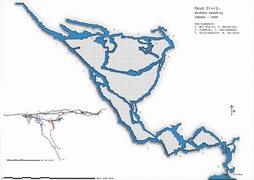 |
We believe that the harmonious cooperation of teams consisting of members from several caving clubs is the only way for Greek caving to undertake demanding explorations of large subterranean systems.
This has been demonstrated by the latest experience of the impressive advances made to the work of SP.EL.E.O at the Sintzi spring.
We hope that every Greek caving and cavediving expedition has a similar outcome.
Finally, we thank the Ephory of Paleoanthropology and Speleology of Southern Greece for the help they provided.
For more information see www.speleo.gr . Contact: info@speleo.gr . |
|
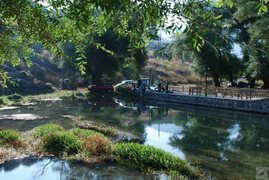
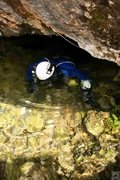
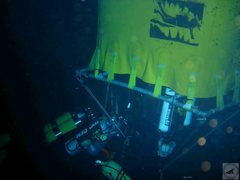
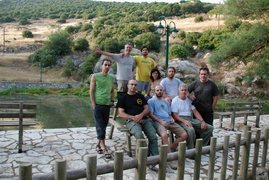
|
